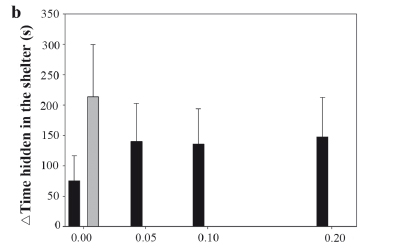Ammonia has relatively toxic effects on fish and other aquatic organisms. This study examined whether juvenile silver catfish exposed to alarm substances released by conspecifics and predators in water with different ammonia levels modify their behaviour in response to the perceived risk of predation. We used juvenile catfish that were naive to predators. The fish were raised from the larval stage in the laboratory and kept in 40-L aquaria at waterborne NH3 concentrations of 0, 0.05, 0.1, or 0.2 mg L-1 for 10 days. The alarm substances used were predator odour and skin extract from conspecifics. The juveniles were transferred to 2-L aquaria for the antipredator and alarm reaction behavioural tests, which were performed on days 1, 5 and 10 after initial exposure to ammonia. The test aquaria contained a shelter at one end of the tank. The trials consisted of a 10-min prestimulus and a 10-min poststimulus observation period. The results of the study suggest that naive juvenile catfish are able to identify predators and skin extract from conspecifics by odour. In addition, waterborne NH3 levels modify the antipredator response of this species.
Alarm substance; Behaviour; Predator odour; Skin extract; Un-ionised ammonia








